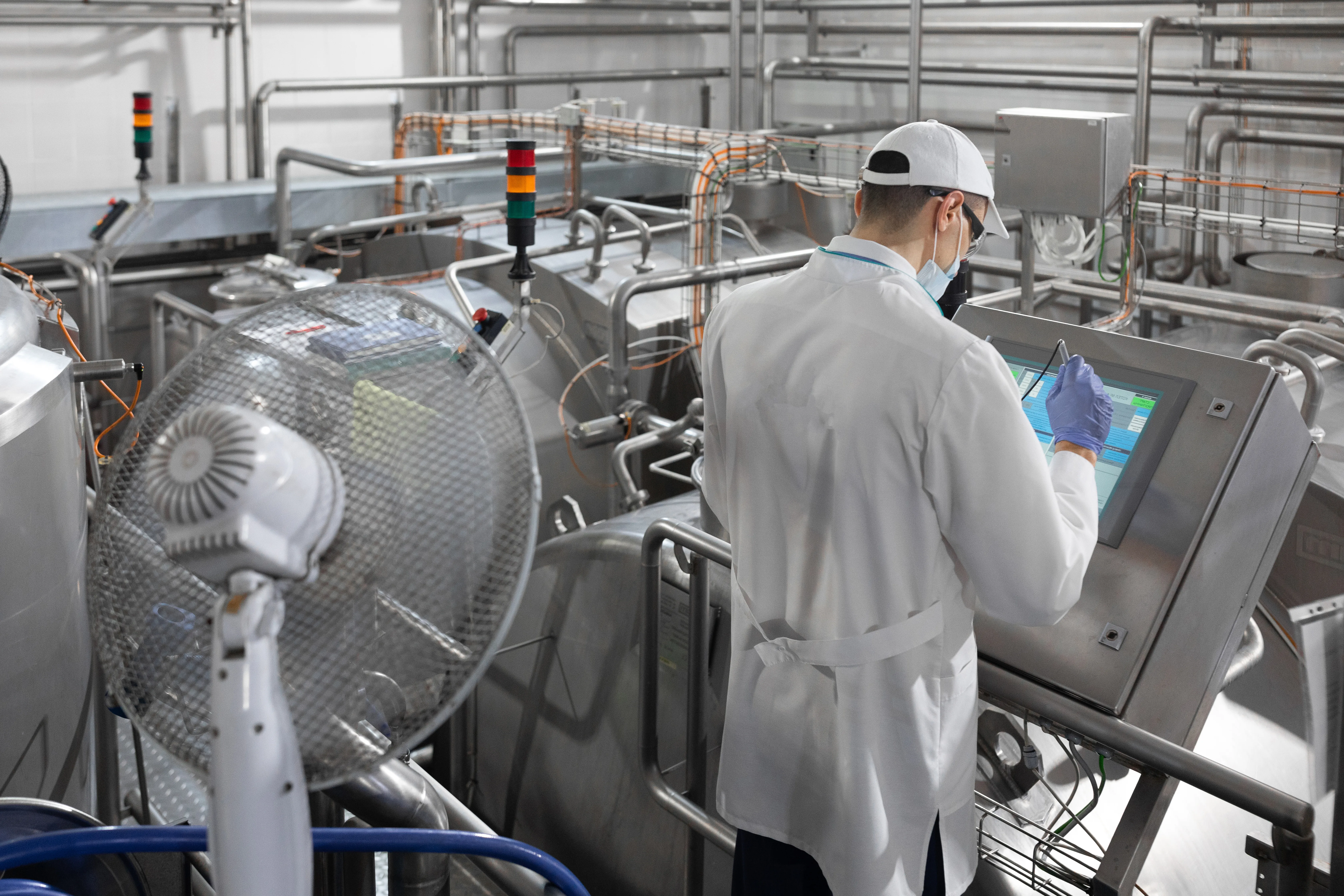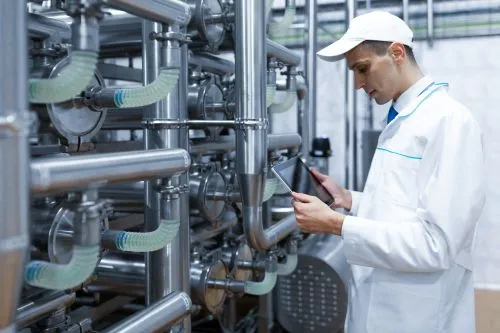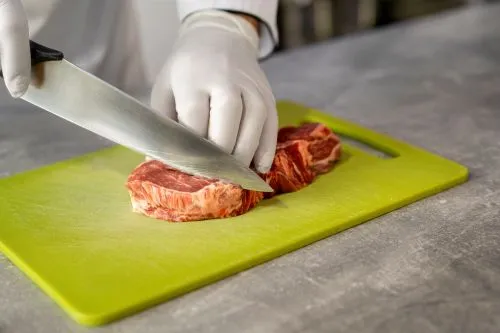1427

Protein alternatives are increasingly of interest due to their potential to improve food security and reduce the environmental impact of food and feed production.
Conventional or Alternative?
A study undertaken for the EU Group on the Future of Science and Technology evaluated the current state and future prospects of protein production globally and in the EU until 2050, as cited in the study "Alternative Protein Sources for Food and Feed," quoted by AllAboutFeed.
The study focused on conventional and alternative protein sources for food and animal feed, considering forecasts indicating the increased need for conventional proteins by 2050 and the fact that climate change requires exploration of nonlinear scenarios and the balance of alternative proteins globally and within the EU protein mix.
Four Alternative Proteins
The research, conducted by Arcadia International EEIG, analyzed four alternative proteins – algae, insects, microbial fermentation, and cultured meat – comparing them with conventional sources they could replace, regarding their relative energy needs, environmental impact, nutritional content, and their potential to be used as substitutes for conventional proteins in food and feed in the EU.
Additionally, the current level of research and development in these four alternatives was explored, along with technological and commercial readiness and industrial capacity.
Obstacles and Development Opportunities
The study also explored regulatory and technical obstacles in the way and development opportunities for alternative proteins that could be considered by EU decision-makers to support targeted growth of the sector.
Globally, the majority of dietary proteins are plant-based (57%), followed by animal-origin sources, but this changes when looking at European dietary proteins (55-60% from animal sources).
The total alternative proteins consumed in 2020 (including plant-based alternatives) amounted to 13 million metric tons or approximately 2% of the animal protein market. The exact contribution of algae, insects, microbial fermented products, and cultured meat is unknown, but they are estimated to represent a small portion of the total.
Sources of Protein for Animal Feed
Protein sources used in animal feed are both inedible, such as grass, and edible for humans (cereals and legumes). The EU is nearly 80% self-sufficient for feed protein sources and has ample coarse fodder supply, which is the primary source of feed protein, but fewer in proteins. However, the EU produces only a quarter of protein-rich oilseed meals, which account for 27% of total feed proteins in the EU. This deficit in feed proteins has been a key argument for reconsidering feed protein sources in the EU in recent years.
Environmental Impact of Current Proteins
The environmental impact of the current protein balance, especially animal-origin protein production, is substantial. Globally, over 3/4 of agricultural land and approximately 2/3 of agricultural greenhouse gas emissions are associated with animal-origin foods. Climate change presents additional risks to the current protein balance.
Looking into 2050, the report considers that conventional protein consumption will increase by 57% for meat and 48% for dairy, assuming economic growth and rising incomes, especially in Asia. However, the impact of climate change on food production, which already affects global protein production, requires considering nonlinear scenarios.
It is estimated that alternative proteins represent 11% of the global food protein market by 2035, with plant-based alternatives dominating in this period. Alternative protein sources from algae, insects, microbial fermentation, and cultured meat are also projected to contribute to protein balance.
Assessment
Insects, microbial fermentation, and cultured meat all require raw materials, which contribute to land use impact. However, all the alternative proteins analyzed have demonstrated equivalent or lower land use compared to conventional proteins they could replace, with algae, insects, and microbial proteins (especially hydrogen-oxidizing bacteria) being particularly efficient in terms of land use.
Efforts to identify and use less land-impacting raw material sources for alternative proteins can further reduce land use impact.
Water Use
Analysis of water use in alternative proteins has shown that algae, especially microalgae and macroalgae cultivated in seawater, demonstrate unequivocally better results compared to conventional proteins.
There is also room for improvement for microbial fermentation and cultured meat, the latter set to use much less water than beef production and potentially comparable amounts to poultry production.
Greenhouse Gas Emissions
Reducing greenhouse gas emissions (GHGs) is a major challenge, but plant-based proteins could play a role, the report suggests. As feed sources, algae production results in more emissions than soy production, while insect production is comparable to other feed sources.
When it comes to food, all alternatives demonstrate lower GHG emissions compared to beef and dairy production, although cultured meat may have emissions comparable to the most efficient poultry production systems.
Nutritional Profile of Alternative Proteins
The nutritional profile of alternative proteins matters for their ability to replace conventional sources in human or animal diets. Some alternative protein sources offer a beneficial macronutrient profile compared to conventional animal-origin proteins.
Microalgae and insects have higher protein content than their conventional counterparts, although digestibility is lower. They also have higher fiber content. The fat content in algae and mycoproteins is much lower than conventional animal-origin protein sources.
Algae also contain high concentrations of healthy fatty acids. It is assumed that cultured meat offers the same macronutrient profile as conventional meat products it could replace, but the feasibility of this hypothesis remains uncertain. Alternative proteins have advantageous profiles when it comes to their micronutrient content.
Algae, insects, and mycoproteins can all provide key vitamins and minerals in higher proportions than conventional proteins. However, it is still uncertain how processing affects these micronutrients and, therefore, their bioavailability. The bioavailability of micronutrients in insects has been found to be equivalent or higher than that of beef.
Nutritional content and other considerations, such as prices and consumer support, suggest that cultured meat and fermented alternative proteins could replace meat and dairy in the EU. Algae and insects as food have the highest potential as alternative ingredients in multi-ingredient products, also assuming consumer acceptance issues.
Both alternatives present some risks for food safety/allergenicity that need to be addressed through processing or during production stages. Insects and algae also have the potential to replace a proportion of feeds in aquaculture, monogastric, and ruminant sectors.
Research and Development
Investments in research and development have taken place, and insects, algae, and mycoproteins have well-established production and processing methods and multiple market applications, thus reaching advanced technology and commercial readiness. Insects as a food source and algae as a food source have reached higher levels of commercial readiness compared to recombinant proteins and cultured meat.
Microbial fermented dairy products have reached commercial maturity but are not yet widely available on the market.
The report states that in the EU, the algae sector has growth potential but requires investments in infrastructure to overcome processing limitations. The insect industry is expanding to meet growing demand and promote circularity.
Cultured meat is still in its early stages, while insufficient industrial capacity of food quality remains a known bottleneck for microbial fermentation, both in the EU and elsewhere.
Challenges
Although alternative protein sources present opportunities for consolidating food security in Europe, they face considerable obstacles:
Expanding technologies
Achieving commercial viability against subsidized conventional sources
Expanding processing and production capacity
Reducing inputs and costs
Addressing infrastructure limitations
Navigating complex regulations
Proposed interventions include:
Targeted research funding to advance technologies and address knowledge gaps
Industrial policy investments in infrastructure and processing
Incorporating environmental considerations into regulatory approval processes





